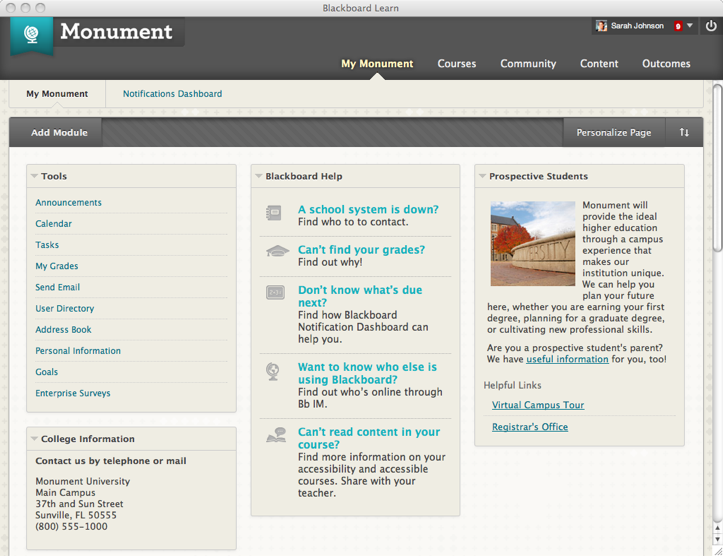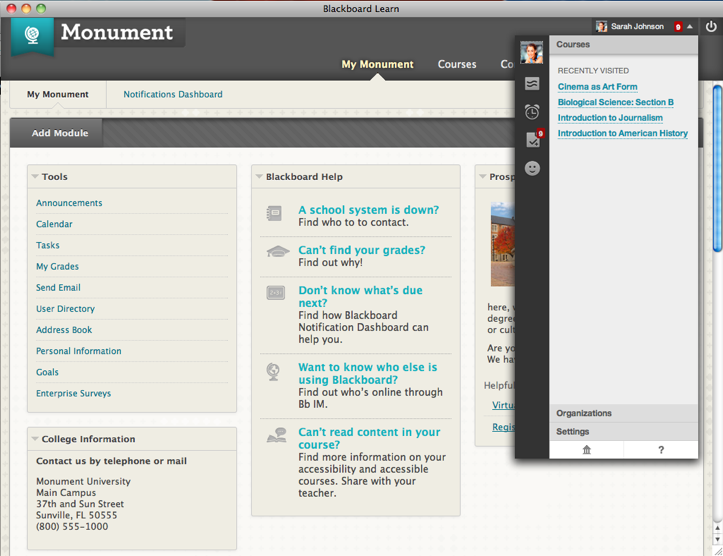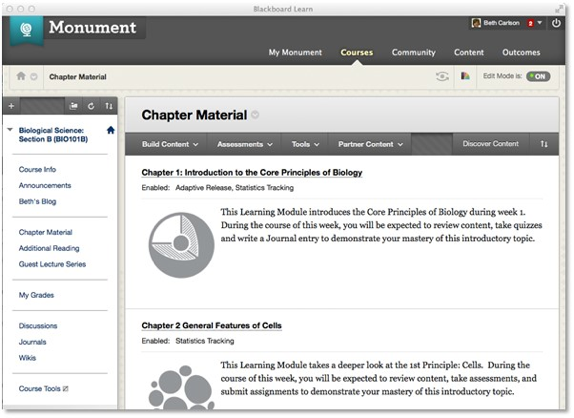Pivoting education technology from teachers to students: Blackboard Learn
Blackboard Learn was one of the first learning management systems in the world, and the flagship product of the company. Millions of students and teachers around the world rely upon it to provide the technology support for the 21st Century Classroom. With most of the business relying upon the core business as an expansion platform, dramatic changes to the experience were not taken lightly. We created an entirely new design language and interaction for how multiple teaching and learning products would work together, refocused on the needs of the learner.
Before
DESIGN CHALLENGE: recenter on the learner
Rethink the purpose of the platform. Educational technology was originally designed to support teachers in their instruction. Modern educational practice focuses on how to create learning experiences, rather than how to deliver instruction. Create an experience designed for the best experience for learners, but achieve the enterprise value required by educational institutions. Oh, also, retain the $400M customer base while attracting new customers, and move the entire platform to SaaS.
Solution
My team proposed and delivered a fresh take on how to completely invert the experience, centering on the learner rather than the educational institution. The information architecture was reduced from five levels of hierarchy to one. Workflows were modified for streamlined learning. A new pattern of interactions were established using a layered design. The entire experience was designed with responsive UI for all devices, shapes and sizes, and to be accessible for users with and without assistive technology. Features were removed entirely. And most creatively, a strategy for delivering the experience over time was established, without requiring existing teacher users to modify their content until they were ready.
RESULTS
I presented this new UX to 3000+ customers live with thousands streaming online, using full functional, live product before launching.
Thousands of teachers, administrators and learners were involved in testing the hypothesis and pushing the iterations forward to get every detail right.
Customers uniformly expressed excitement about getting to this platform, which drove retention metrics higher immediately.
The force of nearly the entire product development team was targeted onto the completion of this vision.














